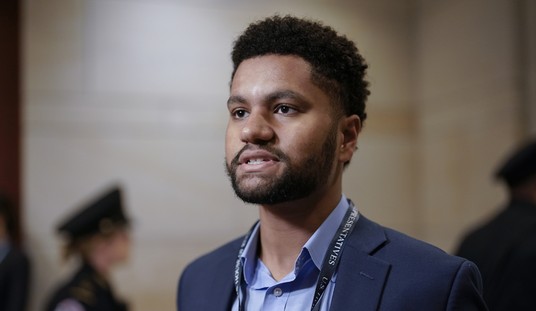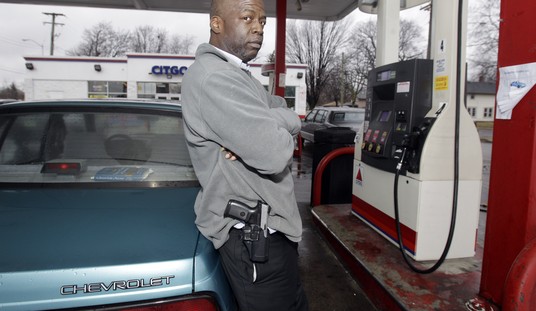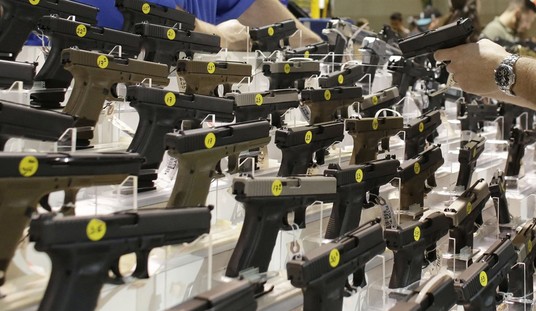People who are willing to spend thousands of dollars on a new AR-15 or custom 1911, but refuse to spend even a few minutes considering how to protect their hearing always amaze me. Hearing is such an important aspect of our lives, yet it is only when hearing loss begins that some people start to take protecting it seriously.
Modern medicine has come a long way in repairing damage to the human body. However, restoring hearing loss from years of unprotected shooting is not something that you can reasonable expect from your doctor. For many people, once your hearing is gone, it is gone forever.
It is important that you consider how you protect your hearing, and determine if there is a better way to help preserve that precious sense for later in life.
What is Loud?
Active shooters run a high risk of hearing damage. Guns are exceptionally loud and even a single gunshot can cause some hearing damage to a shooter not using some form of protection.
Sound loudness is measured in decibels (dB). Decibels are a logarithmic expression, meaning that loudness increases by a power of 10 for every 10 point increase on the scale. So, 70 dB is ten times as loud as 60 dB, and 80 dB is 100 times louder than 60 dB.
The loudness of a gunshot varies depending on caliber, barrel length and other factors. But most shotgun, handgun and rifle shots will produce a loudness of about 155 dB to 165 dB. Things like muzzle brakes can increase the loudness even more.
Hearing damage can begin at about 85 dB of noise depending on the length of exposure. A gunshot is roughly 10,000,000 to 100,000,000 times louder. Reducing the loudness of a gunshot is critical to protecting your hearing.
Ear Plugs
There are two basic forms of hearing protection: in-ear and over-the-ear muffs. Both styles offer some form of protection, and they can be used in conjunction to offer even better protection.
In-ear protection is most frequently seen as disposable earplugs. They can be found at nearly all gun shops, sporting goods stores and even in pharmacies. These tend to be relatively inexpensive, yet offer fairly good protection.
My personal favorite disposable earplugs are the Howard Leight MAX-1. These plugs offer a sound reduction of 33 dB, which is the best I have been able to find. They are fairly inexpensive and I have found them in the local drug store.
Non-disposable earplugs are also available. These can be custom molded for the shooter, or may be plastic plugs that can be washed and reused. The amounts of protection these kinds of plugs provide vary, but the custom molded ones tend to offer better protection than generically sized plugs.
Another earplug option is the SureFire Sonic Defenders. These plugs fit into the ears and have a specially shaped canal through them. This canal allows most normal sounds, such as speech, to go through the plugs. But when loud noises are encountered, the plugs reduce the noise by 11 to 14 dB depending on the model. Additionally, the canals have external plugs than can be inserted into the canals to decrease the noise from 24 dB to 28 dB.
I imagine most hearing experts would say that 11 dB (or even 14 dB) is not enough to be considered adequate protection. But, for the security officer, police officer or military service member who needs their hearing for normal duties, but might encounter unexpected gunfire, 11 dB is a lot more protection than having nothing at all. Plus, the Sonic Defenders offer the ability to quickly increase the protection up to 28 dB if shooting is expected.
Earmuffs
Earmuffs come in normal and electronic varieties. Basic muffs completely cover the ears and provide a reduction of about 20 to 30 dB depending on the model.
Electronic earmuffs add an amplification aspect to overcome the inability to hear range commands and other normal sounds. These muffs will have one or two mics built into the muffs that amplify noises below 85 dB, but shut down when a loud noise, such as gunfire, is encountered. When the amplification is shut down, the muffs provide normal protection.
Prices vary for electronic earmuffs, but there are some very good options for less than $50. I personally own the Howard Leight Impact Sport muffs, which I found work very well with rifle shooting.
For what may be the best bargain in electronic hearing protection, consider these Caldwell E-MAX muffs. I’ve used these for years, and have two pair that I keep on hand for friends when we go shooting. For less than $25, they are absolutely awesome.
Since earmuffs are on the outside of the head, the size of the earcups is important if you are shooting a rifle. Large muffs can interfere with getting a good cheek weld and seeing through the scope.
For this reason, many manufacturers offer low profile muffs that are less likely to interfere with your shooting. The reduced profile will sometimes come at the expense of reduced noise attenuation. Make sure you are still getting the protection you need when shopping.
Earmuffs are considered by some to offer superior hearing protection to plugs because of something called bone conduction. Bone conduction is where sound is transmitted to the ear through the vibrations of the bones, including the skull.
When worn, earmuffs cover a certain portion of the bones that can transmit these frequencies to the ear, thereby reducing bone conduction. For this reason, some shooting ranges forbid the use of earplugs by themselves.
Using plugs and muffs together increase the amount of hearing protection provided to the user. In a study done by E-A-R, combining plugs and muffs resulted in attenuation increases of 3 dB to 17 dB. However, these results were highly variable and depended on what kinds of hearing protection devices were being used and at what frequencies the loud noises were being produced.
The bottom line on the E-A-R study is that combining protection types will improve the amount of noise reduction, sometimes a great deal. For the active shooter, even a moderate amount of improvement can make a big difference in the long run.
Weapon Mounted Hearing Protection
One key safety device that is frequently overlooked is the mounted sound suppressor, or silencer. These hearing protection devices mount to the end of a firearm’s barrel and suppress the noise coming from the firearm.
Contrary to the ignorant beliefs of both Hollywood and the gun grabbers, a suppressor does not “silence” a firearm. Rather, a suppressor attenuates the amount of noise made when shooting.
These basic safety devices reduce the sound output of a firearm by varying amounts, but many will reduce the peak noise level by around 30 dB, or about the same amount as a very good set of hearing protection.
Assuming a 30 dB reduction in noise, that makes shooting the firearm safer for your hearing, but at 125 – 135 dB it is hardly “silent.” A jackhammer, for example, runs about 120 dB.
While using earmuffs or plugs is ok for recreational shooting, they are almost never available in an emergency. If someone was to break into your home, you do not have the time to grab a set of electronic muffs and then your AR-15. You’ve got to go to the gun immediately and protect your family.
Touching off a 5.56 round inside a house is a very loud event. Expect hearing damage from that one. The shorter the rifle’s barrel, the louder the noise. Fire a few rounds and you, your wife and the kids will probably all suffer some form of noise induced hearing loss.
If, on the other hand, you had a suppressor attached to the end of that carbine, you and the kids are not nearly as likely to suffer hearing loss from shooting that rifle.
Suppressors are just safety devices, and the lies told in the movies and government about them just put people in danger.
Bottom Line
Don’t ignore the dangers of hearing loss from shooting. The more you shoot, the greater the risk. Make sure you wear hearing protection every time you shoot, and insist that others with you do so as well.
Invest a little money now and keep your sense for the rest of your life.








Join the conversation as a VIP Member